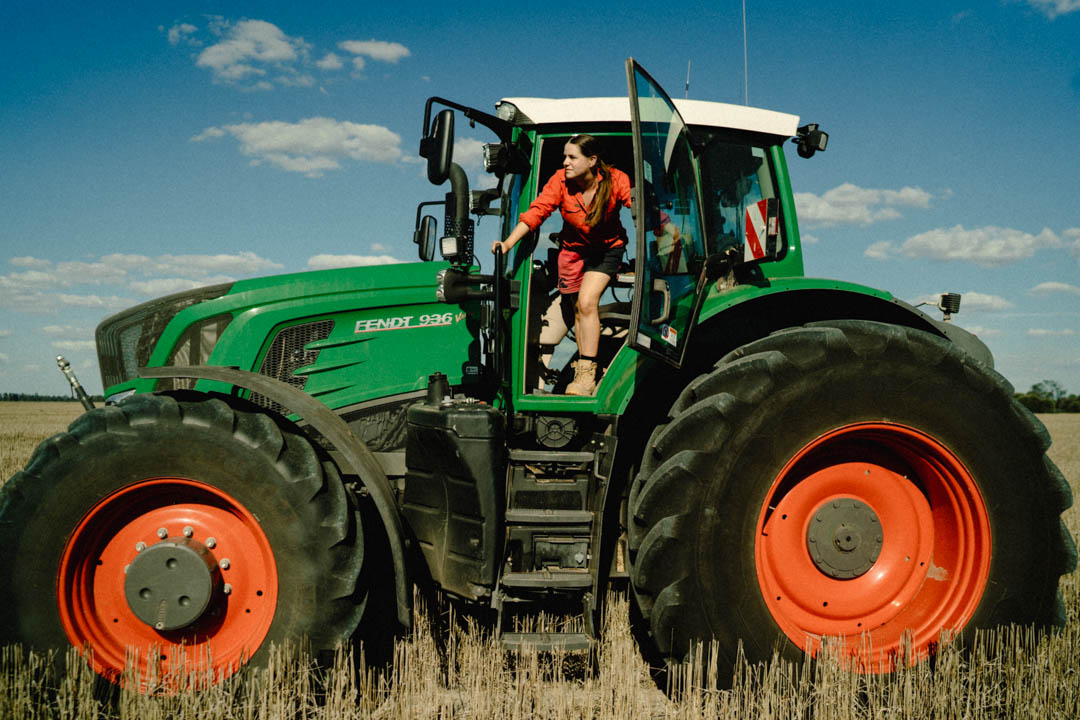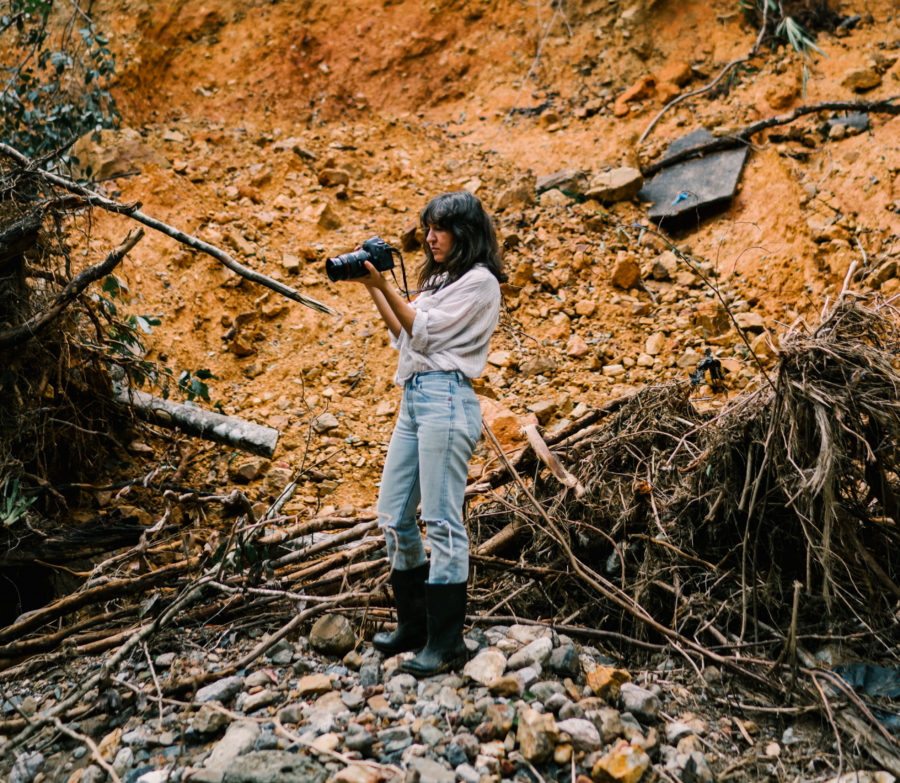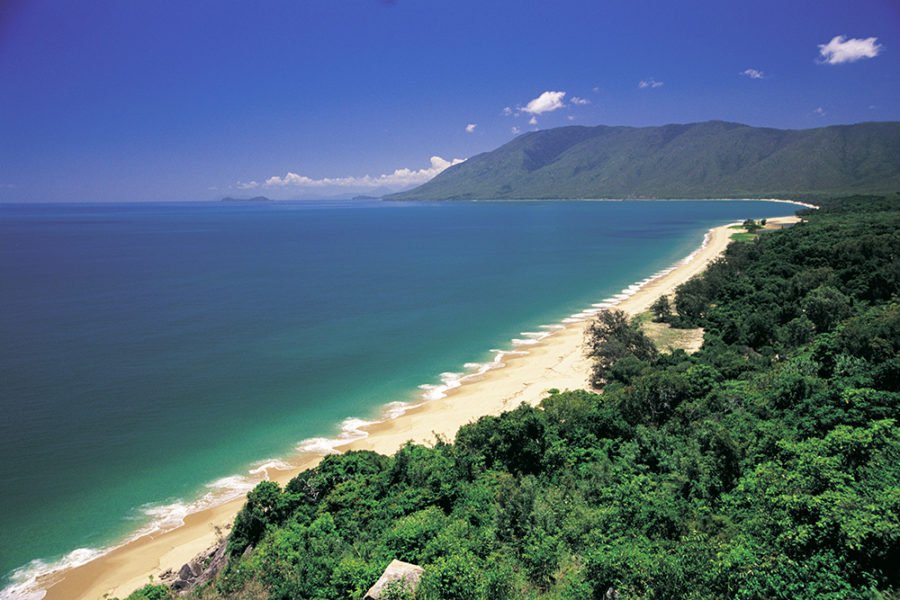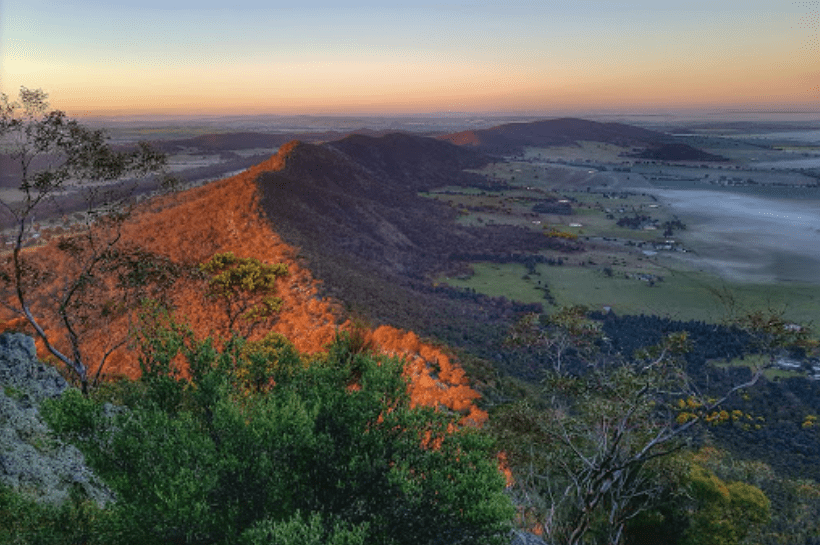At just 19 years of age, Meg Rees is driving her ute across the 1800 hectare property she calls home in Moonie, on the Darling Downs in southern Queensland, more than 330 kilometres west of Brisbane. As we rattle along, she points out wild dogs sheltering in scrub and emus traversing the open plains. The vehicle’s tyres flick up red dirt as she navigates to the oversized shed that houses the farm’s store of machinery.
She’s still on her P plates but that doesn’t stop Meg from manoeuvring her truck and other large farm vehicles with confidence to get her work done. On any given day you’ll find her at the helm of huge tractors, pulling sprayers, ploughs and chaser bins, or seated astride one of the farm horses if the job calls for it. Today, she jumps from her ute to a 3m-high Fendt 936 tractor and reverses with ease.


Most kids around here grew up immersed in the rhythms of the land – planting and harvesting, drought and flood, prosperity and plague. But not Meg. She’s from the city, though you wouldn’t know it.
“She’s got more bush in her blood than we do,” say Neville and Penny Boland, owners of the property Mount Surprise, where Meg works. Wearing an Akubra hat and workboots, the farm’s three dogs snapping at her heels, Meg acknowledges the compliment. Neville and Penny are both dyed-in-the-wool country people. Neville grew up on a nearby farm and has lived in the area all his life. He attended the local primary school, Moonie State School, which decades later is still going strong, albeit with only 20 or so students each year. Also growing up on a farm, Penny studied agriculture at university. Together the couple grow wheat, sorghum, oats and other grains on the property.
In contrast, Meg attended an all-girls college in inner Brisbane and enjoyed a quintessential Aussie suburban childhood with her mother, father and brother. Family and friends expected her to continue her education at university and, while she did enrol in architecture, she soon realised it wasn’t the right choice for her.
“After completing Grade 12 during the chaos of the 2020 COVID lockdowns, I discovered that I was a hands-on learner. I’ve never liked sitting in front of a computer all day,” Meg says. “And then beginning uni in 2021… I could see the same cycle starting again. I dreaded watching all the lectures and classes online, and everything getting cancelled and postponed.
“I wanted to move away from COVID, and experience more of life before I began studying full-time. I needed a change of environment, and although I was nervous, within the first couple of days of working on the farm I knew I was right where I needed to be.”

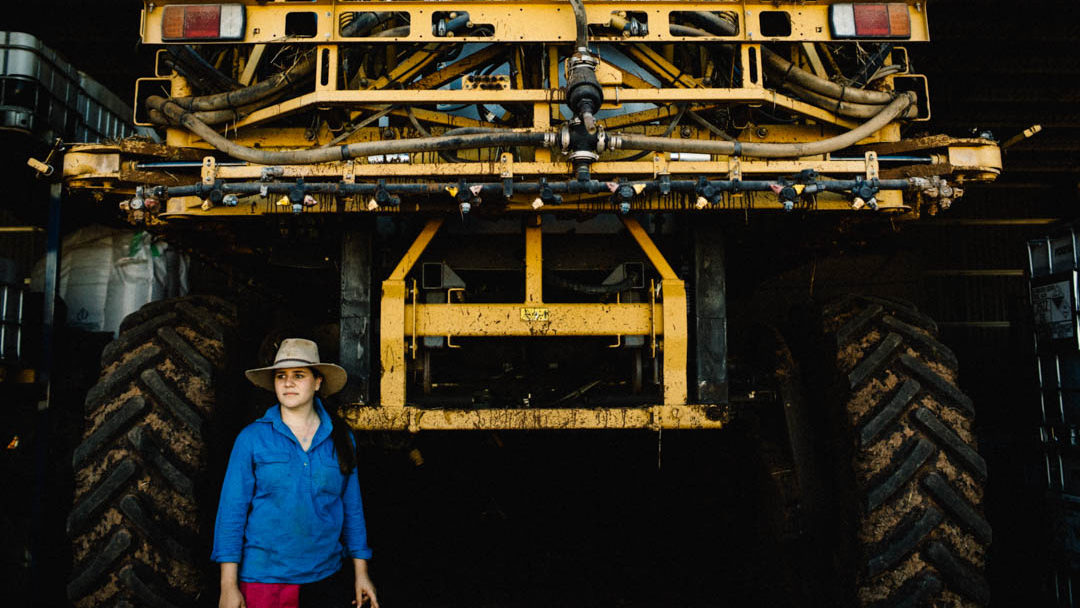
However, had it not been for COVID, Meg admits, she would probably be spending her gap year overseas, following the well-trodden path of many other young Aussies who have made the backpacking pilgrimage around Europe or the USA, funded by waiting on tables or bar work. “I definitely would be overseas right now if I could have been, but that’s not an option given the circumstances,” Meg says. “I just wanted to get out and gain some sort of experience that would be beneficial to my future. Now I’m learning how to fix fences and use tools that I’d only ever seen before in Dad’s shed.”
Twelve months down the outback track, Meg is now undertaking a certificate in agriculture, and says she couldn’t imagine living anywhere else but “out bush”. “Moving to the country has been one of the best decisions I’ve ever made for myself,” Meg says. “You don’t understand the importance of supporting Aussie farmers until you work alongside them. I’ve developed a new appreciation for food and where it comes from.
“I’ve learnt a lot about myself too. When I come home, people comment on how much my confidence has grown. I’ve also changed physically, lost weight. It’s a very healthy lifestyle out here. The nearest Maccas is 100km away!”
Meg is not the only Aussie escaping to the country due to COVID. According to the Australian Bureau of Statistics (ABS), in the three months to March 2021, capital cities had a net loss of 11,800 people due to internal migration, the largest quarterly net loss on record. And there’s no sign of the trend slowing.
Muval, Australia’s largest removalist booking company, has reported more than a million Google searches for terms relating to “moving house” since government restrictions began in March 2020. Muval’s chief commercial officer, Adam Coward, says he expects demand for regional areas to stay high in 2022 as residents sell properties in capital cities and seek more value, more time and better-paying roles across key regional hubs.
“Overall, we saw in 2021 a ‘city downsizing’, with places like Sydney and Melbourne seeing residents move to smaller capital cities, including Brisbane, Adelaide and Perth, that all experienced net positive migration,” he says. “Regional areas, especially along the east coast of Australia, have also seen significant interest coming from capital cities.”
Brisbane and regional parts of Queensland, including the Gold and Sunshine coasts, have seen unprecedented interest from Australians planning to relocate, he adds.
Another booming region is the local government area of Hepburn in Victoria, which saw a 24 per cent increase in migration from capital cities in the 2020–21 period, compared with 2019–20, according to the Regional Movers Index, produced by the Regional Australia Institute (RAI) in conjunction with the Commonwealth Bank of Australia. Two of Hepburn Shire’s newest residents are tree changers Karen Williams, national marketing manager for Play Australia, an organisation that advocates for the benefits of outdoor play, and her recently retired husband, David.
In September 2021, the pair traded their tiny terraced house and courtyard in Melbourne’s hip inner-city suburb of Collingwood for a country cottage with rambling gardens in rural Trentham. Before COVID, their lives had revolved around keeping up with the best culinary and cultural experiences that Melbourne could offer. But when that was completely taken away from them during the city’s protracted lockdowns, the couple found themselves reflecting on what they really wanted from life.
“We loved the Collingwood life. We’d been there for almost 10 years, and we loved walking to the tram, going into the city, walking around the Yarra and heading down to our local cafe for morning tea, lunch or afternoon tea,” Karen says. “But I was working two jobs. We both had difficult and challenging work. We were burnt out, and I think COVID just added to that burnout.
“But COVID also gave us permission to look at our life in a completely different way. We’d been trying to see everything, eat at the latest place…it was exciting, and we loved it, but then we questioned, ‘Is it really important to do those things? Is this a healthy, sustainable lifestyle?’ I think for me, it was like this epiphany.”
It was then, during a break in lockdowns, that the pair travelled to look at real estate in Trentham, an area they were already familiar with, having holidayed in the region many times previously. The town, which has a population of about 1800, was attractive to Karen and David because of its proximity to Melbourne (about 80 minutes by road), which meant they could still connect regularly with their two grown daughters.
Karen then resigned from one of her jobs but was able to retain her other position via a “working from home” arrangement. But despite going part-time, she says the move has also brought financial freedom, thanks to the increased property-buying power that regional areas can provide.
“The only way I could retire was to sell our assets,” Karen says. “Our family business was affected by the global financial crisis, and I worked part-time when our children were at school, which meant I couldn’t contribute much to superannuation.”
But now Karen says she is working fewer hours and her own retirement plans are back on track. The pair say they have no regrets, but they do cite one concern – a simmering feeling of discontent among locals that they’ve seen expressed via social media groups aimed at city people who are perceived as driving up real estate prices and changing the nature of the local community.
“We tree changers aren’t always viewed favourably in town,” Karen says. “I read comments like ‘these Melbournites are coming up and infesting our towns – I don’t know everyone’s name anymore!’ We just want to come and live a nice quiet life, but fitting in here would be my greatest concern. You want to feel like you belong somewhere.”
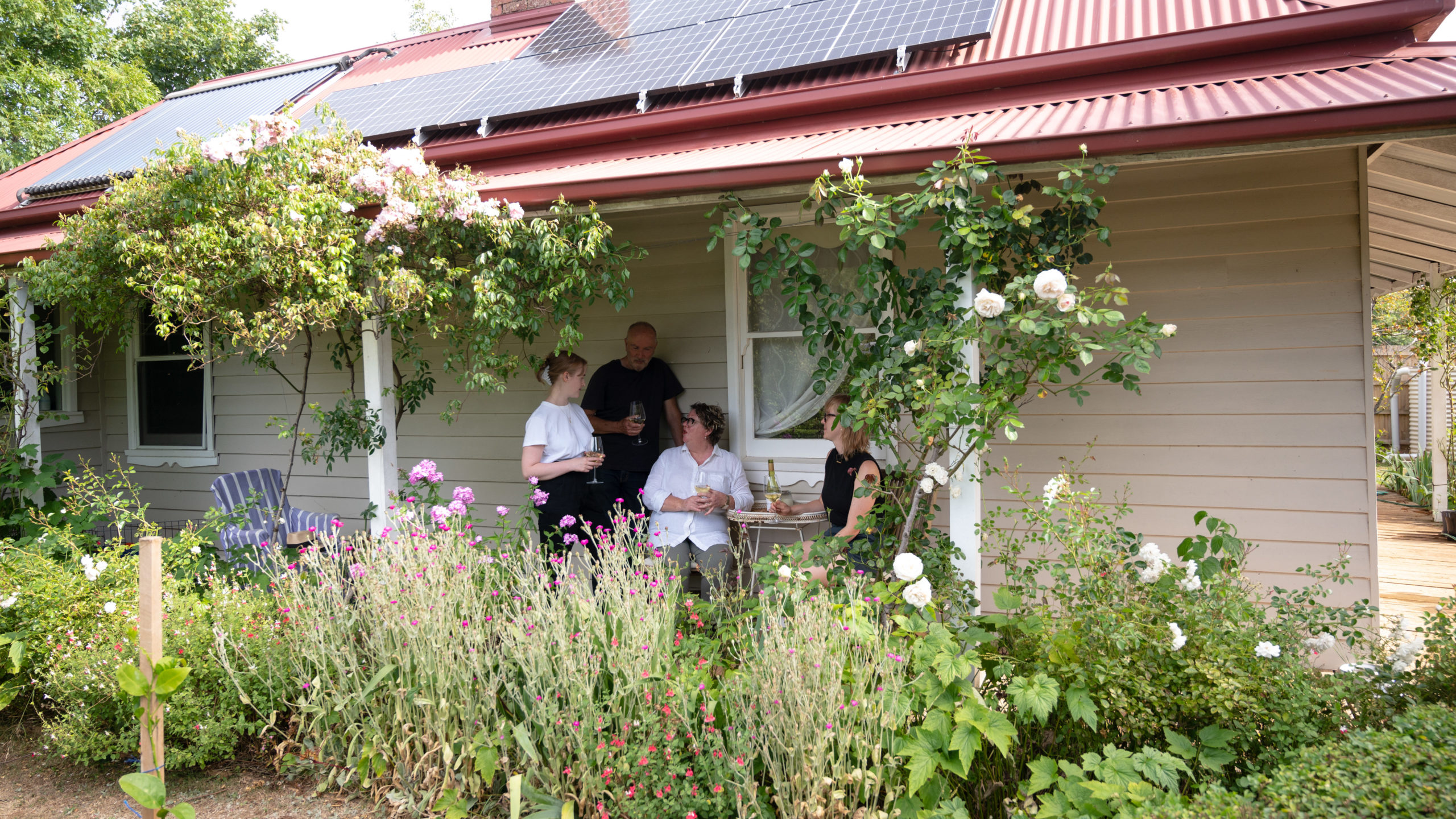
Photo credit: Morganna Magee
Kim Houghton, chief economist for the Regional Australia Institute, agrees that the attractiveness of popular sea change/tree change locations can change the nature of them – and not everyone is happy about that. “You’ve got two things happening in parallel,” Kim says. “You’ve got longstanding residents whose environment is changing because of these newcomers, and some of them will be keen to see the place evolve, but others would like it to stay as it has always been.
But there also seems to be a particular pattern in places where the people who are most resistant to change, who form neighbourhood protection groups and so on, are often the relatively recent newcomers, rather than the longstanding residents who have a longer-term perspective about what their town’s been through.”
Certainly, COVID has precipitated revival in numerous regional areas, and Kim cites Port Douglas, 67km north of Cairns in far north Queensland, as an example of a town experiencing rapid change and where the influx of people is outpacing the expansion of social infrastructure.
“Port Douglas is a community of about 7000 people. The mayor recently said that he didn’t know how this sudden inflow of people was going to play out,” he says. “It’s really stretching their schools, childcare and healthcare [systems]. Nobody was prepared for the scale of growth that they’ve seen in the past 18 months.”
Author and demographer Bernard Salt says being able to “take your job with you”, thanks to the rollout of the National Broadband Network and changing employer perceptions about working from home, was a “gamechanger”.
“It’s opened up a new lifestyle option in Australia,” Bernard says. “There are always people that are nudgeable, persuadable, and they just needed an event to crystallise that decision to move; so along comes COVID…and you can just take your job and go.
“Tech group Canva released a statement saying that they don’t expect their workers to come into the office more than eight times per year. In a case like that, if you’re a knowledge worker and reasonably well paid, you could base yourself on the northern beaches of Cairns and just fly to Sydney when you need to.”
He adds that many will only move as far as the “Goldilocks zone” – not too close, not too far from a major city centre – to townships that are “like little city enclaves sitting amid the country”. “There’s regional Australia and then there’s regional Australia,” Bernard says, referring to the preference for trendy hinterland settlements or beach towns, rather than isolated rural areas.
But he also notes numerous examples of cultural groups and families that have successfully moved to live and work in remote areas in response to labour shortages, and how they have invigorated small towns and communities. “You don’t need a whole movement of people. You just need a couple of families to really enliven a town,” he says.
Mayor of Federation Council Councillor Patrick Bourke agrees. The vast New South Wales shire, formed in 2016 when the Corowa and Urana local government areas (LGAs) merged in the Riverina, stretches from the Murrumbidgee River to the Victorian border and east towards Albury. It boasts the natural beauty of the Murray River as a major drawcard.
“We’re not talking hundreds of people, but in a community like ours, if you get 10 or 20 newies coming in…brilliant!” Patrick says, waxing enthusiastic about the potential impact of new blood in a town. “It’s exciting and COVID has definitely pushed it.
“People are coming out a bit further, both to relocate and to holiday. Our caravan park facilities have been chock-a-block. We’ve been totally rediscovered.”
One such recent arrival to the Federation Council LGA is Kecia O’Sullivan, who moved with her dog and cat from Sydney to a 3ha property in Hopefield, near Corowa. Before leaving the sprawling NSW capital, Kecia was living and working as a part-time teacher’s aide in the affluent, leafy Upper North Shore suburb of Wahroonga, while running her calligraphy business on the side. But when she chose not to be vaccinated for COVID, the government’s mandate left her without a job and an uncertain future.
“Leaving the city, spurred on by the pressures of COVID, gave me the confidence to decide I could make it in my own business,” Kecia says. “I also just wanted a change. I loved living in Wahroonga, but it was a lot of work to just pay the bills and the high rents. I felt like I was in a bit of a rut, and I wanted to expand my business as a calligrapher.”
So when a friend invited her to visit and stay on a property in Hopefield, about six hours from Sydney and where the nearest neighbour is an eight-minute drive away at 100km/h, Kecia jumped at the opportunity.
Although she’s only been living in the country for a short time, Kecia has already turned her hand to picking fruit and other fresh produce – oranges, plums, apricots, grapefruit, lemons, pistachios and figs – in the orchard at the property where she’s staying, and she has also been sorting wool in a nearby shearing shed.
“I helped recently to sort wool and clean up after each sheep gets shorn at a farmer’s place just up the road. It’s fast, hard, sweaty work, and I loved it,” she says.

Kecia has also learnt to use a ride-on mower, and when she’s not getting her hands dirty outdoors, she’s using them indoors in her studio, crafting beautifully written invitations, signs and anything else that might be requested of her burgeoning calligraphy business.
“I think it’s very therapeutic to get out there and dig stuff and mow lawns and deal with physical work,” Kecia says. “But I’m also relieved that my own business has survived this change and is going well. For me, it’s been a little bit of a reset.”
Improved health – both physically and mentally – seems to be a common thread for each relocating person. And
Kecia adds that even her dog’s health has improved after moving away from the hustle and bustle of a city to the more relaxed pace of a bucolic setting.
“My dog loves it here,” she says. “He had been limping a lot at the last two places we lived. But since we’ve been here, he doesn’t limp at all. He’s free to just be a dog and run around without being on a leash.
“I think the air is fresher here and [there’s also] the feeling of having space and not living in boxes next to each other… We have so much space in Australia: why did we ever buy into the idea of living in houses stuck together?”
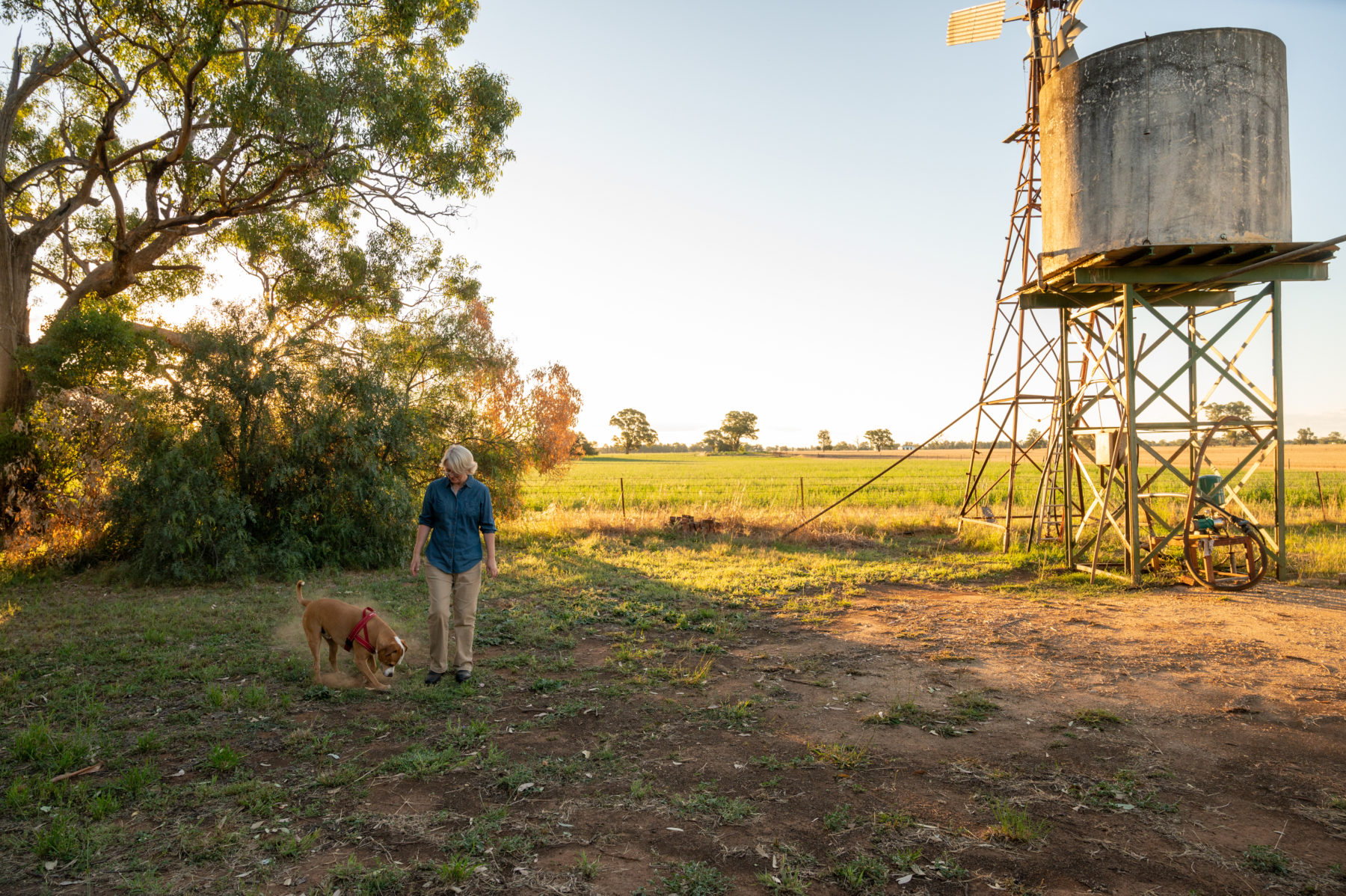
Kecia’s pet is not the only one to benefit. In Trentham, Karen and David’s dog, Billie the puggle, is also loving the wide-open spaces of the country, and she’s lost weight due to the increased exercise.
“She runs around the garden. She was helping us plant yesterday, sitting right in the middle of the soil,” Karen says with a laugh. Karen is adamant that her health has also improved significantly since they made the move.
“One of the reasons for moving was our own health and wellbeing, and to have a home where our daughters can come to for respite,” Karen says, proffering a garden planting guidebook that she’s been taking cues from when sowing her own vegetable and herb gardens.
“I have an autoimmune disease that has improved a lot,” she adds. “The calmness we feel being here has truly changed our lives for the better. In Collingwood we had no backyard, neighbours all over us and apartments around us. You could hear any conversation in anyone’s backyard. Now [in Trentham], we sit on our verandah like Ma and Pa Kettle and look at our beautiful yard and plan what we’re going to plant. It’s just wonderful.”
This feeling of improved wellbeing correlates with the market research findings of the RAI, conducted in conjunction with their Move to More campaign. The organisation reported that one in five Australians living in capital cities were considering a move to the regions, and that the “pull factors” were a stronger incentive than the “push factors”, which included traffic and congestion in cities.
The research showed that the top three factors drawing people to regional Australia were a sense of space, connecting with the natural environment, and an overall sense of improved wellbeing. But according to the RAI’s Kim Houghton, no matter how desirable the move might be, most won’t consider it without having a job to go to.
“When we think about why people are moving, we know that they need to have a job, and perhaps a job for their partner as well,” Kim says.
“There are serious labour shortages across regional Australia, and there are plenty of good jobs. Couple that with the lower cost of housing – I think that’s the core package most people want,” he says. “On top of that, you’ve got the cream on the cake, which is people who are bringing their own jobs to
the regions.”
Back in Moonie, in Queensland, Meg is preparing for harvest. Alongside her mentor, Neville, she’s testing the moisture and protein levels of the soil and plants, waiting for the opportune time to reap the benefit of their efforts.
“Harvest is so rewarding because you’ve watched produce grow from a tiny seed to this big, beautiful crop that is going to be in your bread and all the other things that you usually pick up from the shop,” Meg says. “I’ve learnt so much from being here, probably more than I ever would have at uni.
“Every day is different. One day I’m under a tractor fixing it, and the next I’m mustering cattle on horseback. Agriculture is such a diverse industry, and I’m so grateful for the opportunity I’ve been given to experience our great country in this way.”
A country that never stays put
Whether it’s the arrival of bogong moths, the discovery of gold or a modern mining boom that gets bags packed and feet walking, Australians have always been on the move. According to the RAI’s Kim Houghton, Aussies tend to relocate more than their European counterparts. This is not new. First Nations people engaged in seasonal migrations and, later, when Europeans arrived, bustling townships could materialise seemingly overnight and just as quickly become deserted.
This boom–bust cycle is evidenced by towns such as Victoria’s Walhalla. Once home to almost 4000, the former goldmining community now has a population of about 20. These deserted townships usually feature a few ramshackle buildings and a neglected graveyard. Yet other settlements, with similar histories, seem to endure.

In Trentham, at the top of the Great Dividing Range between the Macedon Ranges and Hepburn Shire’s spa country, the town’s population has been steadily growing since 2000. Formally proclaimed a township in 1867, it’s now a desirable weekend retreat, serene place to raise a family and popular retirement destination. Its success was initially born out of multiple industries – potato farming in the region’s rich volcanic soil, timber felling in nearby Wombat Forest and goldmining. Abandoned shafts can be found on local properties. Trentham’s fortunes have taken several twists and turns during the years, mostly driven by forces outside its control. Two world wars and the Great Depression saw the deaths of 36 residents, with many more left disabled and livelihoods lost.
Local historian Dr Peta Sherlock says the creativity of one resident family, the Trewhellas, potentially saved the town after their farming inventions turned into an international manufacturing business. “In its heyday, the Trewhella Foundry employed more than 75 men and is one of the reasons the town survived through the troubling depression and war years,” Peta says.
Other factors continue to drive Australia’s internal migration, creating knock-on effects for the destination towns. Sociologist Dr Nick Osbaldiston says that as well as COVID, housing affordability and the high cost of living are pushing some out of cities. He also notes the emergence of “climate change refugees” moving in search of cooler and greener pastures. “As we see the pressure on cities continue, factors like housing affordability, lifestyles, safety and climate will play a role in drawing people out in the regional areas. However, whether this is a sustained move away from the city or not is difficult to know,” he says.
